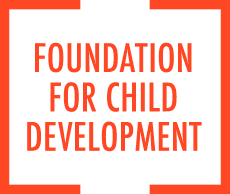https://www.fcd-us.org/dual-language-programs-in-the-u-s-an-alternative-to-monocultural-monolingual-education/
This paper compares Spanish-speaking Kindergartners to other Kindergartners in terms of three teacher characteristics: The use of Spanish for instruction in the classroom; teachers’ rating of the importance of knowing English for Kindergarten readiness; and years the teacher has taught Kindergarten.
--------------------------------------------------------------------------------------------------------------------
Garcia, E., & Jensen, B. (2006). Dual-language programs in the U.S.: An alternative to monocultural, monolingual education, Language Magazine, 5(6), 30-37.
Dual Language (DL) programs are relatively new in the United States and represent an alternative to monolingual education. The impetus of these programs is to create dual language competencies in students without sacrificing their success in school or beyond. Unique among program alternatives, the goals of DL are to provide high-quality instruction for students who come to school speaking primarily a language other than English and simultaneously to provide instruction in a second language for English speaking students. Schools offering DL programs thus teach children language through content, with teachers adapting their instruction to ensure children’s comprehension and using content lessons to convey vocabulary and language structure. Striving for half language minority students and half native English-speaking students in each classroom, DL programs also aim to teach cross-cultural awareness. Programs vary in terms of the amount of time they devote to each language, which grade levels they serve, how much structure they impose for the division of language and curriculum, and the populations which they serve.
The purpose of this paper is to offer a broad-based view and critique of DL programs in the United States. Authors discuss the theoretical foundation for such programs — which have leaned heavily on linguistic research and socio-cultural theory — and assess the quality current DL programs in the U.S. in terms of student achievement and cultural responsiveness. Moreover, authors conclude that DL programs carry the potential to achieve two admirable goals in a simultaneous fashion:
- Bridge cultural and linguistic divides between the community, home, and school, validating and leveraging the non-English oral and literacy skills of language-minority students.
- Prepare all U.S. students to become fluent in more than one language, which is a marketable skill in today’s increasingly diverse and global society. Bilingualism also contributes to increased cognitive flexibility and high achievement in math, science and language arts.
